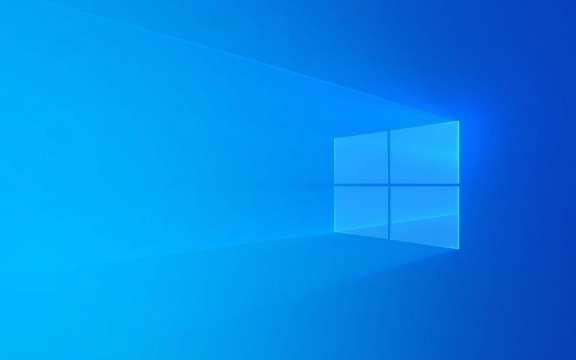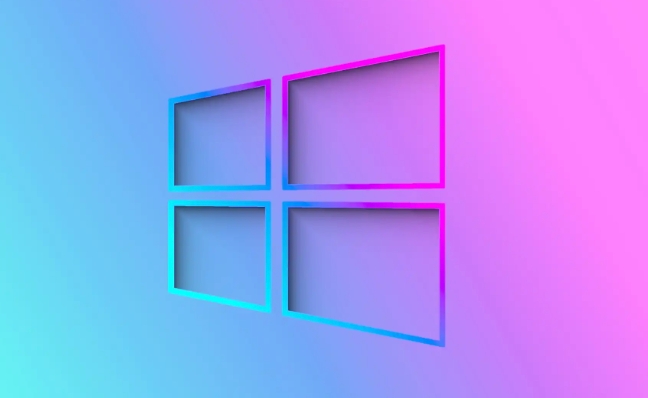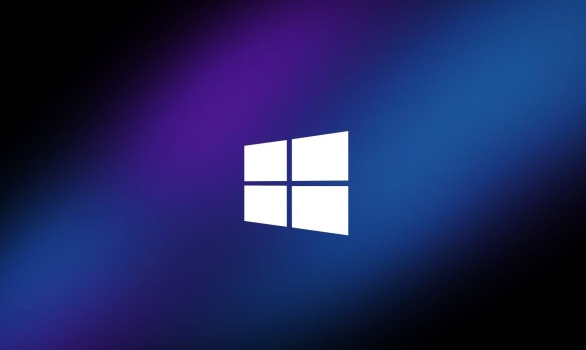Quick boot is a hybrid shutdown feature of Windows 10 that speeds up booting by saving kernel status to the hard disk, but may cause problems when dual systems, hardware recognition or driver updates. To check whether it is enabled, you can go to the control panel → Power Options → "Select the function of power off button" to check whether "Enable Quick Start" is checked; if it cannot be operated, administrator permission is required or the command powercfg -h off is required to disable it; it is recommended to turn it off when using dual systems, frequently changing hardware, external devices to recognize abnormalities, or debugging the startup process, ordinary users can maintain the default settings without special needs.

Although the "Quick Boot" function of Windows 10 can make the system boot faster, it can sometimes affect the experience of shutdown, hibernation or dual-systems. If you need to turn it off completely, it is not enough to operate directly from the system settings, and you also need to cooperate with the power management settings.

What is Quick Start?
Quick boot is actually a hybrid shutdown method for Windows. When shutting down normally, the system will completely shut down all processes and power off; and after enabling fast boot, the system will save the kernel status to the hard disk, and directly load this part of the data when powering on next time, thereby speeding up the startup speed.
This feature is enabled by default, and there is no problem for most users. However, in some scenarios, such as if you frequently connect external devices, modify BIOS settings, or use dual systems, you may encounter problems such as not being able to identify hardware or system startup abnormalities.

How to check if Quick Start is enabled?
Before trying to shut down, you can confirm whether your system has Quick Start enabled:
- Open Control Panel → Power Options
- Click "Select the function of power off button" on the left
- If you see the "Shutdown Settings" area, you have checked before "Enable Quick Start (Recommended)" to indicate that it has been enabled
If you don't see this option, it may be an account permission problem, or the system version does not support it.

Turn off the quick start step
To turn off Quick Start correctly, you need to enter the power settings to adjust:
- Open Control Panel and enter Power Options
- Click "Select the function of power off button" on the left
- If the "Enable Quick Start" option is gray-free, it means that your current account does not have administrator permissions
- Remove the “Enable Quick Start” checkmark and click “Save Changes”
Sometimes you will find that even if you cancel the check, you cannot save it. At this time, you need to run the command prompt as an administrator and enter the following command to disable it:
powercfg -h off
This command also turns off the hibernation function. If you also want to retain the hibernation function, you need to set additional registry keys. This step is recommended for users with some experience.
Which situations are more suitable for shutting down quick start?
Not everyone has to turn off this feature, but it might be more appropriate to turn off Quick Start in the following cases:
- Use dual systems (such as Windows Linux) because fast boot will cause the file system to be uninstalled correctly, affecting the read and write of another system
- Frequent update of driver or hardware configuration, and the hybrid shutdown opportunity causes some hardware to not be fully initialized.
- External devices (such as USB devices, printers, etc.) are occasionally unrecognized. After turning off, you can check whether it is related to this.
- Want to accurately test the system startup process, such as debugging or optimizing boot time
For ordinary users, unless they encounter specific problems, they can keep the default settings.
Basically that's it. The operation is not complicated, but it is easy to ignore details, such as permission issues or mistakenly thinking that unchecking can take effect. If you are not sure whether you need to close it, you can first observe whether there are related problems and then decide whether to operate.
The above is the detailed content of How to disable fast startup in Windows 10. For more information, please follow other related articles on the PHP Chinese website!

Hot AI Tools

Undress AI Tool
Undress images for free

Undresser.AI Undress
AI-powered app for creating realistic nude photos

AI Clothes Remover
Online AI tool for removing clothes from photos.

Clothoff.io
AI clothes remover

Video Face Swap
Swap faces in any video effortlessly with our completely free AI face swap tool!

Hot Article

Hot Tools

Notepad++7.3.1
Easy-to-use and free code editor

SublimeText3 Chinese version
Chinese version, very easy to use

Zend Studio 13.0.1
Powerful PHP integrated development environment

Dreamweaver CS6
Visual web development tools

SublimeText3 Mac version
God-level code editing software (SublimeText3)

Hot Topics
 Windows 11 slow boot time fix
Jul 04, 2025 am 02:04 AM
Windows 11 slow boot time fix
Jul 04, 2025 am 02:04 AM
The problem of slow booting can be solved by the following methods: 1. Check and disable unnecessary booting programs; 2. Turn off the quick boot function; 3. Update the driver and check disk health; 4. Adjust the number of processor cores (only for advanced users). For Windows 11 systems, first, the default self-start software such as QQ and WeChat are disabled through the task manager to improve the startup speed; if you use dual systems or old hardware, you can enter the power option to turn off the quick boot function; second, use the device manager to update the driver and run the chkdsk command to fix disk errors, and it is recommended to replace the mechanical hard disk with SSD; for multi-core CPU users, the kernel parameters can be adjusted through bcdedit and msconfig to optimize the startup efficiency. Most cases can be corrected by basic investigation
 How to Change Font Color on Desktop Icons (Windows 11)
Jul 07, 2025 pm 12:07 PM
How to Change Font Color on Desktop Icons (Windows 11)
Jul 07, 2025 pm 12:07 PM
If you're having trouble reading your desktop icons' text or simply want to personalize your desktop look, you may be looking for a way to change the font color on desktop icons in Windows 11. Unfortunately, Windows 11 doesn't offer an easy built-in
 Fixed Windows 11 Google Chrome not opening
Jul 08, 2025 pm 02:36 PM
Fixed Windows 11 Google Chrome not opening
Jul 08, 2025 pm 02:36 PM
Fixed Windows 11 Google Chrome not opening Google Chrome is the most popular browser right now, but even it sometimes requires help to open on Windows. Then follow the on-screen instructions to complete the process. After completing the above steps, launch Google Chrome again to see if it works properly now. 5. Delete Chrome User Profile If you are still having problems, it may be time to delete Chrome User Profile. This will delete all your personal information, so be sure to back up all relevant data. Typically, you delete the Chrome user profile through the browser itself. But given that you can't open it, here's another way: Turn on Windo
 How to fix second monitor not detected in Windows?
Jul 12, 2025 am 02:27 AM
How to fix second monitor not detected in Windows?
Jul 12, 2025 am 02:27 AM
When Windows cannot detect a second monitor, first check whether the physical connection is normal, including power supply, cable plug-in and interface compatibility, and try to replace the cable or adapter; secondly, update or reinstall the graphics card driver through the Device Manager, and roll back the driver version if necessary; then manually click "Detection" in the display settings to identify the monitor to confirm whether it is correctly identified by the system; finally check whether the monitor input source is switched to the corresponding interface, and confirm whether the graphics card output port connected to the cable is correct. Following the above steps to check in turn, most dual-screen recognition problems can usually be solved.
 Want to Build an Everyday Work Desktop? Get a Mini PC Instead
Jul 08, 2025 am 06:03 AM
Want to Build an Everyday Work Desktop? Get a Mini PC Instead
Jul 08, 2025 am 06:03 AM
Mini PCs have undergone
 Fixed the failure to upload files in Windows Google Chrome
Jul 08, 2025 pm 02:33 PM
Fixed the failure to upload files in Windows Google Chrome
Jul 08, 2025 pm 02:33 PM
Have problems uploading files in Google Chrome? This may be annoying, right? Whether you are attaching documents to emails, sharing images on social media, or submitting important files for work or school, a smooth file upload process is crucial. So, it can be frustrating if your file uploads continue to fail in Chrome on Windows PC. If you're not ready to give up your favorite browser, here are some tips for fixes that can't upload files on Windows Google Chrome 1. Start with Universal Repair Before we learn about any advanced troubleshooting tips, it's best to try some of the basic solutions mentioned below. Troubleshooting Internet connection issues: Internet connection
 How to clear the print queue in Windows?
Jul 11, 2025 am 02:19 AM
How to clear the print queue in Windows?
Jul 11, 2025 am 02:19 AM
When encountering the problem of printing task stuck, clearing the print queue and restarting the PrintSpooler service is an effective solution. First, open the "Device and Printer" interface to find the corresponding printer, right-click the task and select "Cancel" to clear a single task, or click "Cancel all documents" to clear the queue at one time; if the queue is inaccessible, press Win R to enter services.msc to open the service list, find "PrintSpooler" and stop it before starting the service. If necessary, you can manually delete the residual files under the C:\Windows\System32\spool\PRINTERS path to completely solve the problem.







